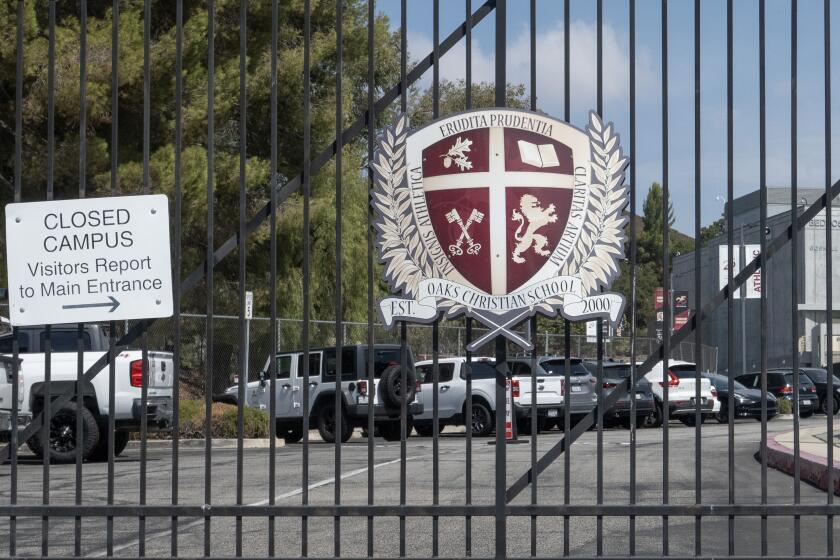Voters in Paramount OK Slow-Growth Proposition
A slow-growth measure in Paramount passed because people simply did not want any more high-density apartments in the city, said the man who spearheaded the movement.
“The city will be better off with less density. They will not have to contend with the congestion, overcrowding and increased crime caused by density,” said George Tanner, chairman of the Concerned Citizens for Controlled Growth.
City Councilman Gerald A. Mulrooney, who was part of a council majority that campaigned against the measure, said: “There are no sour grapes. The council will repond to the will of the people.”
Mulrooney predicted that the slow-growth measure would force developers to build cheaper projects.
Voters soundly approved Proposition FF, which limits multiple-family housing construction to 22 units per acre. Paramount had had a limit of 70 units per acre until the council recently imposed a temporary lid of 22 units.
A recent housing boom started a debate over whether growth was good for the community, which was once a hay-growing, dairy-farming area.
A total of 163 single-family homes and 289 apartment units have been built in the last 14 months, or are under construction. The council has approved about 550 additional apartment units.
A public outcry against the building boom, especially the construction of apartments, began in late 1987.
Tanner formed Concerned Citizens for Controlled Growth, which circulated petitions to qualify Proposition FF for the ballot.
Concerned Citizens for Controlled Growth raised more than $15,000 and spent $13,000 to deliver its message to the city’s 12,000 registered voters.
Tanner said the group was concerned that continued growth would bring the city serious problems, including traffic congestion, increased crime and overcrowding in the schools. Tanner was aided by his son, Lloyd, a former city planning commissioner who was fired last November by the council after he questioned the building trend and suggested that the council place some limits on growth. George Tanner started his petition movement several months later.
Opponents to Proposition FF, Paramount Committee for Progress, raised $12,000 and spent $9,600. The money came from a handful of developers and businessmen.
Mayor Charles Weldon, a strong supporter of the building trend, contended that officials were seeking to change a negative image of the city through development. A 1982 RAND Corp. report labeled Paramount one of the nation’s suburban disaster areas.
The report said that Paramount--along with eight other southeast Los Angeles communities--was in trouble because of crime, low-income residents, lack of growth and a stagnant economy.
Officials point to the downtown area that has since been redeveloped through an infusion of more than $150 million in private and redevelopment agency funds.
The vigorous housing development was undertaken to bring middle-income residents to the city, officials said.
More to Read
Sign up for Essential California
The most important California stories and recommendations in your inbox every morning.
You may occasionally receive promotional content from the Los Angeles Times.










